Stellenbosch contribution to the GSSA bulletin
Stellenbosch Earth Science students continue to excel
Stellenbosch University was well represented at the recent Igneous and Metamorphic Studies group meeting held in the Vredefort impact structure between 13 -16 January. The SU contingency comprised four students and three staff, with Post-Doctoral student Matthew Mayne collecting the accolade for the best Ph.D. presentation for his work on phase equilibrium modelling during melting.
Ph.D. student Ismael Kangueehi attended the 2nd International Symposium on Medical Geology in Africa which took place in Johannesburg from the 5th to 7th of November 2018. The symposium focussed on the most recent findings on the relationship between the impacts of geological processes, toxic metals, trace elements, natural dust and minerals, on environmental quality and public health. The symposium provided a platform to discuss and engage international scientists about the new developments in the field of medical geology. Ismael presented about air quality assessment and potential health impacts at Saldanha Bay (Western Cape, South Africa) and won the prize for best oral presentation.
Ismael's success complements a host of student publication outputs originating from his colleagues in the Centre for Trace and Experimental Biogeochemistry (TracEx) research group. Ph.D. students Ryan Cloete and Johan Viljoen both celebrated 2018 first author papers in international journals for their respective research into seasonal Cu, Zn and Ni cycling in the Southern Ocean, and into predicted phytoplankton response to global change.

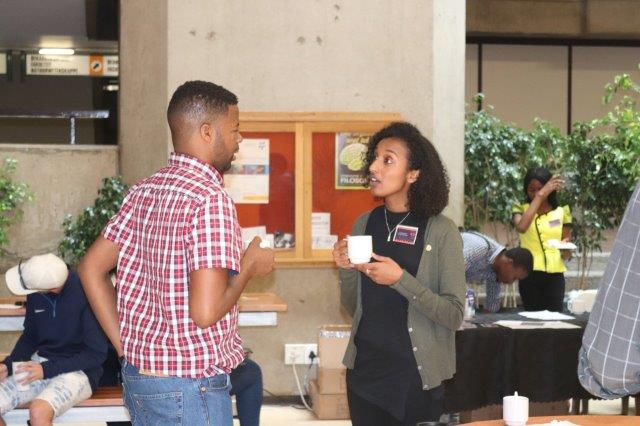
Current PhD student Ismael Kangueehi and Stellenbosch Earth Sciences alumnus Conchita Kamanzi (credit: Patrick Gevera, UJ)
Collaborative SUN-UP sampling of Mesozoic dykes along South Africa's West Coast
After the IMSG, postdoc Dr Cole Kingsbury (UP), Dr Martin Klausen (SUN) and an MSc-student from UJ (Mr Johan O'Kennedy) drove down the west coast, in search for Mesozoic dykes. Apart from several Google Earth targeted 'red herrings' and a roughly coeval, but more felsic and alkaline, Kugelfontein Complex, the team managed to collect 10 samples from mafic dyke outcrops. Apart from standard petrography and geochemistry, Dr Kingsbury will use UP's selfrag in a pioneering attempt to separate bigger baddeleyites for U-Pb dating, and most dykes were certainly thick and coarse grained enough for that (e.g., the 40 m-thick dyke in figure).

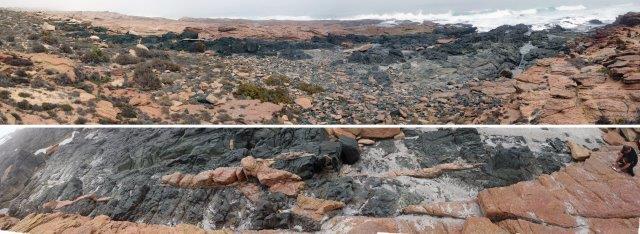
West Coast dyke outcrop. Top: overview of a NW-SE trending and 40 m-thick mafic dyke. Bottom: Close-up of the dyke's south-western margin, with several host rock slivers and dyke apophyses. Cole provides a scale for lower photo, to the right.
Staff member receives award for teaching excellence
In the 2018 edition of the annual Stellenbosch University Teaching Excellence Awards, lecturer Dr Bjorn von der Heyden received the accolade of being selected as one of 11 recipients of the Teaching Excellence Awards in the 'Developing Teacher' category. The award acknowledges his creative, yet scholarly approach towards designing teaching interventions that facilitate the students' learning about his field of economic geology.

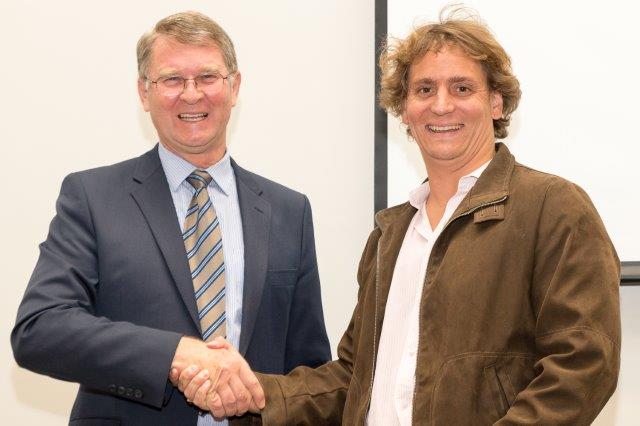
Economic geology lecturer Bjorn von der Heyden receives his Teaching Excellence Award from Prof. Arnold Schoonwinkel, Vice-Rector: Learning and Teaching at SU.
New Fluid Inclusion Microthermometry Laboratory
The Economic Geology research group at SU is pleased to announce the completion of a new petrography laboratory which is dedicated to ore geology research. The lab is equipped with a Zeiss Primotech and camera for ore microscopy, and with an Olympus BX53 microscope coupled with a Linkam THMSG600 geological heating stage. The research group looks forward to providing new and exciting scientific contributions related to the fluids responsible for forming ore deposits.
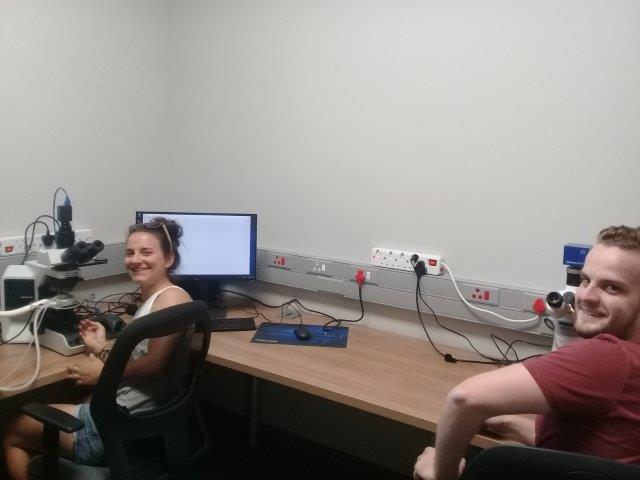
M.Sc. level students Christina Comuso and Stephan Dunn looking excited about their new laboratory.
SU Earth Sciences represented at the 2nd African Light Source conference
Synchrotron light sources produce X-rays that are super high brilliance allowing scientists to probe detailed chemical information at very high spatial resolutions. Around the world, multiple synchrotrons are being utilized to advance the frontiers of science; however, to date no such facility exists on African soil. Between 28 January and 1 February, Dr Bjorn von der Heyden attended the 2nd African Light Source conference in Ghana, where he presented on the role that synchrotron science plays in understanding the earth system (and specifically the formation of ore deposits). He envisages that if and when a synchrotron facility is constructed in Africa, the equipment will include end stations that service the broader geoscience community.

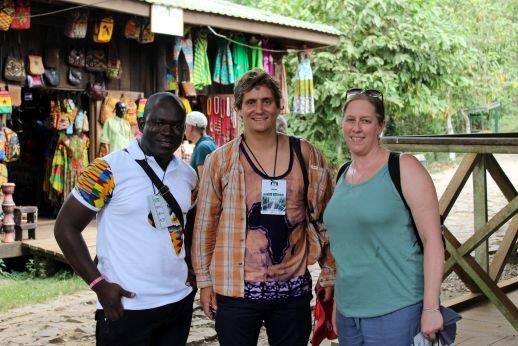
Bjorn von der Heyden (center) posing with colleagues from the Science Faculty (SU) at the Kakum National Park in Ghana (photo credit: AfLS).
Outreach activities with the Hermanus University of the Third Age (U3A)
On Tuesday 12 February, Dr Bjorn von der Heyden and Dr John Bristow gave a special lecture focused on the utilization coal as an energy resource and the status of Eskom to the Hermanus U3A. The talk marked the start of a series of U3A seminars celebrating 2019 as the Year of Carbon. The talk was well attended and the audience was super engaging, asking a host of interesting and insightful questions. Some of the audience members included geoscience professionals as there are over 40 active and retired geoscientists in the greater Overberg area. The SU Department of Earth Science looks forward to continuing a close relationship with this important community.
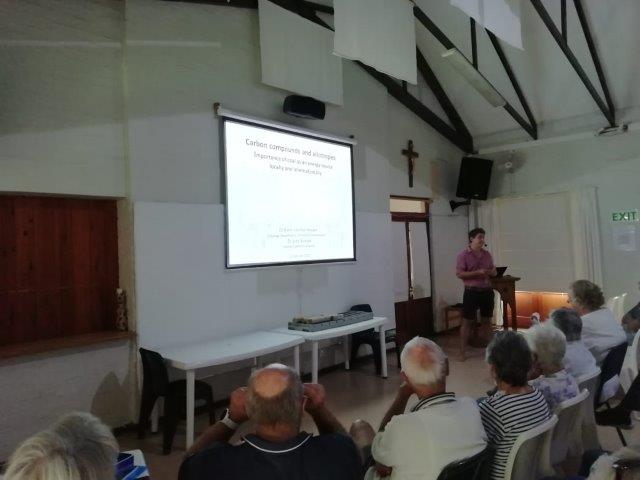
Bjorn von der Heyden engages with the Hermanus U3A in a well-attended seminar focused on the coal as a natural resource.

